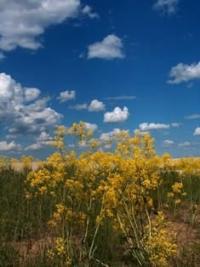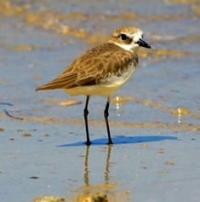You are here
Hydrology of Korgalzhyn Reserve.


Special excursion Korgalzhyn Reserve.
“It is not from long life that the mind matures, but from frequent travel”
Group inclusive tour Korgalzhyn Reserve.
Korgalzhyn State Natural Reserve is the largest reserve in the Republic of Kazakhstan. It is located in 130 km to the south-west of Astana City and it occupies the area of 258.9 thousand ha including 198 thousand ha of water area.
The reserved area starts in 45 km from the central farmstead located in Korgalzhyn village. In general, the reserve is two large connected lakes of Tengiz and Korgalzhyn. “Tengiz” means “Sea”. The area of the water level is 159000 ha.
It is twice bigger than the area of Geneva Lake and water mineralization 506 times exceeds the salinity of the World Ocean. Korgalzhyn Reserve is a paradise for people who love watching birds. Here you can see more than 300 species of birds.
Amongst them there are typical steppe representatives as bustard-dudak, demoiselle, sociable lapwing, lesser kestrel, black lark. Here are the northernmost nested areas for pink flamingo. In the avifauna there are 42 species, which are on the pages of “The Red Books”.
Near the reserved lakes there are more than 40 species of mammals. Half of them are gnawing mammals: marmots, ground squirrels, mice, field-voles, jerboas, hamsters and others. Here you can easily see fox, corsac fox, badger and ermine thanks their large quantities.
In summertime from the southern areas of Kazakhstan here come steppe saiga antelopes. Shallow lake Korgalzhyn has plankton. In its water (with very low salinity level) there are golden and silver crucian carps, pikes, ides, perches and other fish.
The flora contains around 350 species, out of which 90% are grass plants. Ephemera are widely represented and they make the steppe beautiful in spring when they flower.
Tengiz lake.
Tengiz in translation from Kazakh - "sea". It has a water mirror area of 1,590 square kilometers and a coastline of 488 km. The lake is located at an altitude of 305 meters above sea level. The lake is 46 kilometers long and 19 kilometers wide.
Lake Tengiz is bitter-salt, inland, located in the center of the Kazakh small hills (Sary-Arka), in the central part of Kazakhstan. Lake Tengiz is quite large; it is three times larger than Lake Constance on the lake with many islands. The lake is located in a tectonic hollow.
The shores are mostly lowland. The food is mostly snowy. The bottom is flat, sometimes piled with black silt, suitable for medicinal purposes. In some years, a significant part of Tengiz dries up. Water contains mirabilite (salinity 3 - 12.7 g / m³, in the bay 18.2 g / m³).
It freezes in December, opens in April. The Nura River flows into Tengiz. For the first time in the history of Soviet manned space exploration, the crew of the Soyuz-23 expedition, a crew of two cosmonauts, Zudov and Rozhdestvensky, were forced to descend to Lake Tengiz in 1976.
The landing of the lander on the lake took place late at night in a snowstorm 2 kilometers from the coast at a temperature of −20 ° C. The exit hatch was in the water, the astronauts were in the descent vehicle for about 12 hours.
They managed to save the astronauts only by towing the descent capsule ashore with the help of a helicopter. Among the lakes of the former Soviet Union, the lake took 12th place. The depth of the relict lake in 1945 left 8 meters, and in recent years - no more than 1.5 - 2.5.
The lake has an elongated shape. There are about 70 islands on Lake Tengiz. Various colonies of gulls and waders nest on the islands, as well as the rarest birds of our fauna - flamingos and pelicans. The bottom of the lake is clayey, covered with gray and black silt with the smell of hydrogen sulfide.
There is a drop in lake level. Since 1968, the largest part of the area around the lake has been a conservation zone and is part of the Kurgaldzhinsky nature reserve. There are no fish in the lake. The lake is unattractive for hunting waterfowl (for example, ducks and geese), however, it is an ideal place for nesting of colonial waders, gulls, terns and even such a rare bird as pink flamingos.
The reed beds of the lake give shelter to numerous waterfowl, not only during nesting, but also during molting in late summer and during spring and autumn migrations. Biologists counted 340 plant species, 318 bird species, and 50 mammalian species in the conservation zone that existed until now.
Among others, saigas and steppe wolves can be noted. On the islands of Lake Tengiz, 500 pairs of curly pelicans listed in the Red Book, up to 14,000 pairs of pink flamingos and 1,300 pairs of large gulls nest. In the steppes around the lake, the steppe eagle, the Inumidian crane, nest.
Nura River is a fairly large steppe river with year-round runoff. Annual flow rate amounts to 466 million m. The water regime of the river has a pronounced spring flood and long summer part with extremely rare rain floods. In spring, during the period of rapid floods, the river consumes up to 90% of the annual flow.
High water occurs in late March - early April and lasts from 2 to 3 weeks to 1 to 2 months. The water level in the river can rise by 2 - 3 meters. The rest of the year, the river’s nutrition decreases sharply and is due to groundwater.
Summer runoff is 3% of the annual runoff, autumn - 2%, winter - 7%. During the flood period, the river desalinates and has calcium bicarbonate water. With a decrease in runoff, mineralization increases. In the low-water period, water becomes sodium chloride.
Authority:
"Korgalzhyn State Nature Reserve." Sidorova T.
Photos by:
Alexander Petrov.







